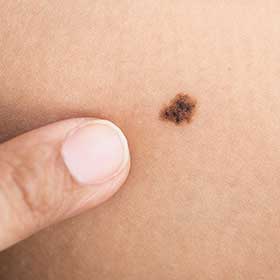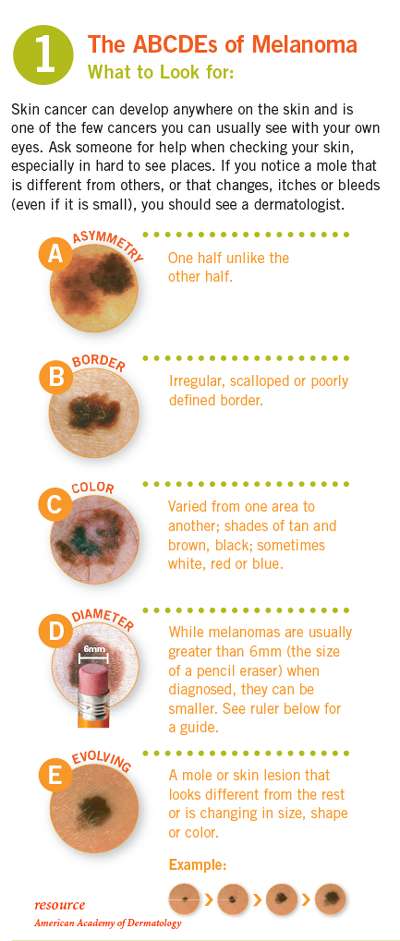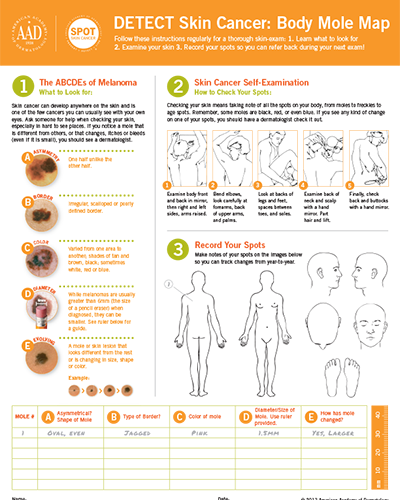Skin Cancer
Skin Cancer is the most common type of cancer. However, if caught in its earliest stages, it’s also completely curable. That’s why the Dermatology Center of Shelby, in accordance with the American Cancer Society, recommends routine self skin examinations and skin cancer screenings with a dermatologist or a physician.
Cancer screening involves examinations and tests to catch cancer in its earliest stages of development even though you may have no symptoms. If you are between the ages of 20 and 39 you should have a skin exam by your personal doctor or a dermatologist every three years, and once a year from age 40 on.
Skin cancer can appear anywhere on the body, but is most common on areas exposed to the sun, such as the back and shoulders for men and legs for women. People should watch for moles that change in size, color or shape. An asymmetrical mole, a darkly pigmented mole, or one with an irregular border should raise a red flag. A mole does not have to be raised to be dangerous — in many cases, flat, dark lesions are cause for concern.



